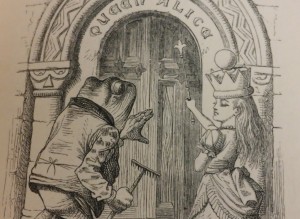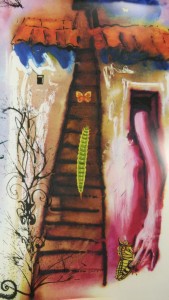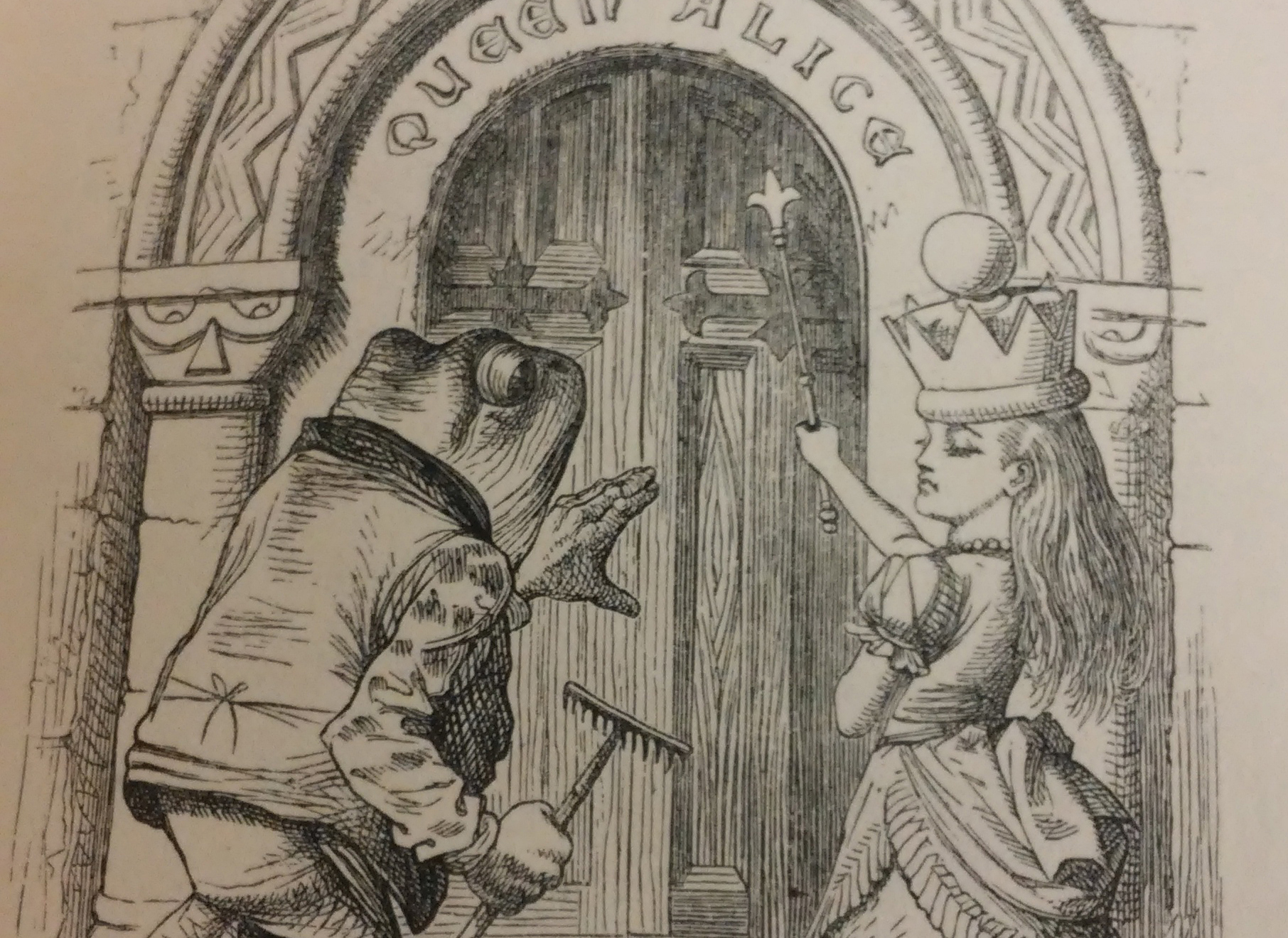Lewis Carroll’s famed book Alice’s Adventures in Wonderland turns 150 this year.
Illinois State University will celebrate the book’s publication anniversary with an exhibit developed by Special Collections in Milner Library. The exhibit focuses on the cultural legacy of the book and Alice’s impact on artists, writers, and creative types—from Walt Disney to Salvador Dali.
“Our culture reinterprets the Alice books, just as we reinterpret Shakespeare and fairytales,” said Jan Susina, professor of English who researches and teaches Carroll in children’s literature and Victorian literature courses. Susina is the author of The Place of Lewis Carroll in Children’s Literature.
The Milner Library exhibit, which runs until February 12 on the sixth floor of Milner Library, includes books, prints, and even dolls that show the evolution of Alice. “We can really see how different artists approach Alice over time,” said Maureen Brunsdale, Special Collections head, who organized the exhibit with input from Susina.

“Queen Alice” from the first edition of Through the Looking Glass, from the Milner Library Special Collections.
Brunsdale gently turns the pages of a first edition Through the Looking Glass that will be part of the exhibit. “I like to think of Lewis Carroll as an overnight success, whose work has continued impacting people since Alice in Wonderland,” she said.
Among the printed materials, perhaps the most striking items in the exhibit will be a series of images from a limited-edition lithograph by Salvador Dali in folio format, and autographed by the artist himself. “It is a series of interpretations of how Dali saw Alice,” said Brunsdale, unfolding the folios from the oversize case where they are housed in Special Collections. “I love what he does with the text,” she said, pointing to a weaving sweep of words in a folio named “Down the Rabbit Hole.”
Our culture reinterprets the Alice books, just as we reinterpret Shakespeare and fairytales.
Many Americans find their way to Wonderland through Walt Disney, said Susina, who spoke on the subject at Cambridge University’s conference “Alice Through the Ages: The 150th Anniversary of Alice in Wonderland” in September. “American readers in particular discover Alice through the animated version Disney did in 1951,” said Susina. “His film adaptation of Alice in Wonderland casts a long shadow.”

An image inspired by Alice in Wonderland, part of a limited-edition lithograph series by Salvador Dali in folio format, from the Milner Library Special Collections.
Susina noted the book did lend itself to the visual format of movies, with intricate illustrations from artist John Tenniel. Yet Disney’s film illuminates Wonderland in a very different way. “They are both funny, but they’re a different kind of funny,” he said. “While Carroll celebrates word play, puns, and parodies, Disney is really good at a sort of slapstick humor that we see in cartoons. They both have brilliance, and Disney’s adaptation has many wonderful songs as well. Who doesn’t know ‘The Unbirthday Song’ with the Mad Hatter? It’s a very successful Disney film, but it is not Lewis Carroll’s Wonderland.”
Published at Christmastime in 1865, Carroll’s Wonderland was a break from traditional children’s literature. “Prior to Alice, most children’s books were heavy on lessons and light on entertainment,” said Susina. “Alice is meant to entertain a child in an intelligent way that adults can enjoy as well.”
An Oxford University professor of mathematics, Carroll filled both Alice books with numerous references to mathematical puzzles and philosophical debates, yet kept it engaging for children. “There are all sorts of puzzles and math jokes in the books. There’s a wonderful scholarly book called Lewis Carroll in Numberland by Robin Wilson that explains them,” said Susina, who noted the humor and storytelling are part of what makes Alice in Wonderland important to the history of children’s literature. “Because it was so successful, more and more books were published to simply entertain children. It was a turning point,” he said.
Carroll’s original work, called Alice Under Ground, is available for viewing on through The British Library’s website. Made as a gift for Alice Liddell, it was a precursor to the book Carroll would write for publication.
Popular since its publication in 1865, Alice’s Adventures in Wonderland is important in our cultural lexicon and is frequently referenced in contemporary media. In his office in Stevenson Hall, Susina pulled out Craig Yoe’s Alice in Comicland that shows Alice themes in comics, such as Archie, Superman, and Peanuts. “There have been at least 20 film adaptations, from silent films in the early 1900s to Tim Burton’s recent film. Some people see Wonderland as scary and nightmarish, others see humor,” he said. “I doubt we’ll ever stop transforming Alice.”
For more information about the exhibit, contact Special Collections at (309) 438-2871. To contact Susina, call Media Relations at (309) 438-5631.

